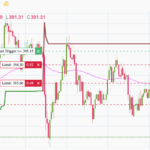Stock index options are options whose underlying is not a single stock but an index comprising many stocks. It increasingly gains popularity since it is been introduced in 1981. Investors and speculators trade index options to gain exposure to the entire market or specific segments of the market with a single trading decision and often through one transaction. Gaining the same level of diversification using individual stocks or individual stock options, it requires numerous transactions and consequently slower decision making and higher costs. Thus trading index options provide the investors the opportunity to trade options on the whole broad-based market with less hassle and relatively little capital.
Generally strategies for trading index options are not so different from equity options, with some exceptions. Index options are flexible derivatives and can be used for hedging a stock portfolio consisting of different individual stocks or for speculating on the future direction of the index.

nusarayacipta.alaindonesia.com
Investors can use various strategies with index options. The easiest strategy entail buying a call or put on the index. An investor buys a call option entirely to make a bet on the level of the index going up. To make the opposite bet on the index going down, an investor buys the put option. Related strategies involve buying bull call spreads and bear put spreads. A bull call spread involves buying a call option at a lower strike price, and then selling a call option at a higher price, whereas the bear put spread is the exact opposite. By selling an option further out of the money, the investors expend less on the optimum premium for the position. These strategies allow investors to recognize a limited profit if the index moves up or down but risk less capital due to the sold option.
Investors may buy put options to hedge their portfolios as a form of insurance. A portfolio of individual stocks is likely greatly correlated with the stock index it is part of, meaning if stock prices decline, the larger index likely declines. Instead of buying put options for each individual stock, which requires significant transaction costs and premium, investors may buy put options on the stock index. This can limit portfolio loss, as the put option positions gain value if the stock index declines. The investor still retains upside profit potential for the portfolio, although the potential profit is decreased by the premium and costs for the put options.
Another popular strategy for index options is selling covered calls. Investors may buy the underlying contract for the stock index, and then sell call options against the contracts to generate income. For an investor with a neutral or bearish view of the underlying index, selling a call option can realize profit if the index chops sideways or goes down. If the index continues up, the investor profits from owning the index but loses money on the lost premium from the sold call. This is a more advanced strategy, as the investor needs to understand the position delta between the sold option and the underlying contract to fully ascertain the amount of risk involved.
More from my site






